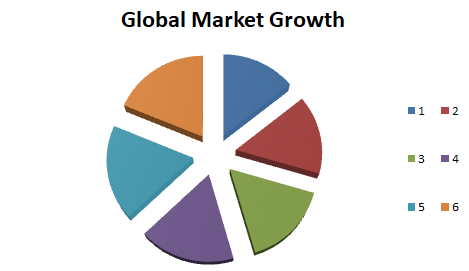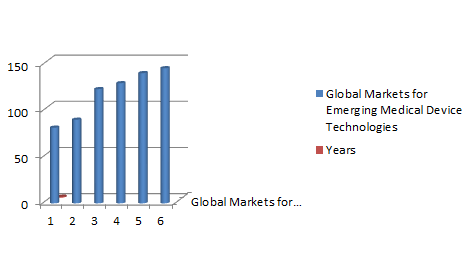Theme: “Current Progressions and Constraints in the Field of Vision and Eye Careâ€
EYE 2023
With the coordination of organizing committee, “6th International Eye and Vision Congress” will be scheduled during February 02-03, 2023 in Barcelona, Spain focusing on the theme “Current Progressions and Constraints in the Field of Vision And Eye Care”. We invite all the participants who have an interest in sharing their analysis and data within the space of Vision and Eye care.
EYE 2023 will be a fantastic forum for discussing original research and ideas. The one-day seminar will ignite attendees' interest in the domain of vision and the eye. Ophthalmologists, optometrists, opticians, scientists, professors, business assistants, students, and members of all ophthalmology associations and universities can network at this event. Additionally, it facilitates opportunities for continuous education and high-quality material presented by keynote speakers.
By selecting a topic from the "call for abstracts" or your research interest in the relevant field, speakers from all over the world can submit their abstracts, papers, case studies, and posters. "Eye 2023" offers lodging packages and reasonable registration for delegates, presenters, doctors, students, academicians, and groups. With the appropriate options listed on the registration page, anyone can sign up for this conference.
Why to attend?
- To meet eminent speakers, ophthalmologists, young researchers and health care professionals from universities, research institutions, hospitals and pharma companies around the world.
- Excellent platform to showcase the latest products and formulations in ophthalmology
- To find the most innovative and recent and advancements in Vision and Eye care
Target Audience:
- Ophthalmologist
- Optometrist
- Eye surgeons
- Health care professionals
- Orthoptist
- Oculist
- Ophthalmic medical practitioner
- Vision therapist
- Pharmacists
- Pharmaceutical companies
- Clinical researchers and scientists
- Medical practitioners, deans, professors, students and technicians.
- Diagnostic instruments in eye surgery
Track 1: Ophthalmology and Optometry
Ophthalmology is defined as a branch of science that compacts with the diagnosis and treatment of eye disorders. Ophthalmologists are trained to care for all eye problems and circumstances. Eye surgeries are usually done on the eye or its adnexa by an ophthalmologist. An ophthalmologist is accountable for selecting the correct surgical process for the treating a patient. Optometry is also a health care profession that emphasis on examining the eyes for any defects or abnormalities. Usually, the world of optometry coined with the primary focus of modifying refractive error through the use of glasses. Modern-day optometry, however, has advanced through time to include substantial training within the diagnosis and management of ocular disease.
- Cornea
- Glaucoma
- Refractive surgery
- Neuro-ophthalmology
- Ocular oncology
- Clinical ophthalmology
- Oculoplastics
- Ophthalmic pathology
- Paediatric ophthalmology/strabismus
Tracks 2: Neuro-Ophthalmology
Neuro-ophthalmology is a union of neurology and ophthalmology. The nero-ophthalmologist is in responsible for the treatment and diagnosis of intricate systemic nervous diseases that affect, eye movements, arrangement, vision and pupillary reflexes. Eye diseases treated by a neuro-ophthalmologist.
- Squint or Strabismus
- Toxic or Nutritional optic neuropathy
- Papilledema
- Optic neuritis
Tracks 3: Eye Diseases
Several eye diseases, and age related variations affect the eyes and adjacent structures. Internationally, 2.2 billion individuals are facing eye diseases and visual impairment. Reduction in pupil size and the damage of accommodation or concentrating capability are the most important changes observed. Ocular diseases can even rise from sexually transmitted diseases such as herpes and genital warts. Worldwide, the leading reasons of vision impairment are:
- Uncorrected refractive errors
- Age-related macular degeneration
- Glaucoma
- Cataract
- Trachoma
- Diabetic retinopathy
- Corneal opacity
- Thyroid eye diseases
- Autoimmune diseases
- Genetic eye diseases
- Ocular autoimmune diseases
Track 4: Pediatric and Geriatric Ophthalmology
A Pediatric ophthalmologists effort on the improving the vision and to treat various diseases that disturb visual growth in children. Pediatric ophthalmologists are specially proficient to manage the disorders like: Conjunctivitis, Strabismus, Amblyopia, Blocked tear ducts, Ptosis, Retinopathy of prematurity, nystagmus, Visual inattention, Congenital malformations, Pediatric cataracts, Pediatric glaucoma, Genetic disorders, Orbital tumours. The Geriatric ophthalmology compacts with general and ocular functional changes that occur due to aged, clinical method in geriatric patients, common geriatric ocular diseases, spectacle dispensing aspects in ageing patients and pharmacological features of ageing.
- Childhood malignancies
- Conjunctivitis
- Nystagmus
- Blepharitis
- Entropion/Ectropion
- Pterygium
- Amblyopia
- Corneal ulcer or keratitis
- Corneal degeneration
- Corneal dystrophy
Track 5: Veterinary Eye Care
Veterinary vision is an ophthalmic repetition given that attention for animal’s eye vision. The veterinarians take care of cats, dogs and other small animals including rabbits, chinchillas, birds and reptiles, horses and other farm animals. Some veterinary eye diseases are:
- Entropion
- Corneal ulcer
- Corneal dystrophy
- Glaucoma
- Retinal detachment
Track 6: Corneal Disorders and Treatment
The eye is a subtle and fragile matter and each part of an eye utility in its own way to uphold its normal vision. The clear part of the eye that includes the iris, pupil, and anterior chamber is cornea. Concerns such as corneal ulceration, epithelial keratitis & drug-induced epithelial keratitis, recurrent corneal erosion, corneal regeneration, and miscellaneous corneal disorders can distract the cornea and finally lead to peripheral eye disease that might end up with permanent blindness. Consequently, examination of corneal disease is approved out to mitigate the disease, and approaches like contact lenses & vision correction are also used to cure vision-related problems. A clinical procedure like corneal transplantation is used to transplant the cornea.
- Corneal ulceration
- Corneal transplantation
- Corneal anaplastology (prosthesis)
- Corneal neovascularization
- Corneal degeneration
Track 7: Retina and its Disorders
Retina is a small film of tissue inside back frame of your eye. It encompasses a huge total of light-delicate cells and other nerve cells that obtain and put together visual data. Retina sends this information to the cerebrum through the optic nerve, authorizing to see. The principal zone of the retina includes of a vastly thick shading subtle photoreceptor cells called cones which are liable of shading vision and thus any abnormality and modification in the focal area of the retina can lead to colour vision imperfections. Disorders like retinal tumors, diabetic retinopathy and other specific eye disease can likewise be responsible of the lasting vision malformation. Age-related Macular Degeneration (AMD) is a retinal degenerative disease that origins loss of focal vision.
- Retinal vasculitis
- Retinal tumors
- Retinal transplant
- Retinal detachment
- Retinopathy of prematurity ophthalmologic approach
- Retina and retinal Surgery
Track 8: Pathophysiology of Glaucoma
Glaucoma is a disorder wherever the optic nerve is injured due to an rise in the intraocular pressure. The pathophysiology of glaucoma is said that the intraocular pressure in the eye upsurges if there is no proper trabecular discharge of aqueous humor. There are two kinds of glaucoma: Primary open-angle glaucoma (no proper drainage of eye fluids), Angle-closure glaucoma (iris is very close to drainage angle). Various glaucoma surgery practises are:
- Argon Laser Trabeculoplasty (ALT)
- Selective Laser Trabeculoplasty (SLT)
- Laser Peripheral Iridotomy (LPI)
- Cyclophotocoagulation
- Trabeculectomy
- Drainage implant surgery and Electrocautery
Track 9: Night Blindness and Color Blindness
The incapability to see the shading is called color blindness, but is not a kind of blindness by any means. With this vision difficult, one experience issues in identifying certain shades. Visual impairment all the more exactly, shading vision absence is an acquired disorder that impacts usually males more than female’s Red-green shading non-appearance is the most well-known sort of visual impairment. Nyctalopia is also known as “Night Blindness” and is a kind of vision impairment. Individuals with night blindness face trouble seeing or driving in dimness. A few kinds of night blindness are treatable, and some kinds are not treatable. One must go to professional to decide the elementary reason for vision impairment.
Track 10: Ocular Oncology and Pathology
Malignant melanoma rises most usually in adults aged 60 to 65 years. It happens due to the unrestrained growth of cells called melanocytes. Ocular oncology is trans disciplinary which comprises, pediatric oncologists, general oncologists, specialist nurses, clinical scientists, and many others. The most usually witnessed malignancies are uveal and conjunctivitis melanoma, uveal metastasis, intraocular, conjunctiva carcinoma, and conjunctiva lymphoma. Diagnosis is established on bio microscopy, angiography, optical coherence tomography, ultrasonography auto fluorescence imaging, and biopsy.
- Anisocoria
- Lagophthalmos
- Night blindness
- Uveitis
- Macular degeneration
- Heterochromia iridis
- Hyphema
- Aniridia
- Iridodialysis
Track 11: Idiopathic Intracranial Hypertension – Ocular Migraine
Idiopathic intracranial hypertension (IIH) rises when high pressure round the brain causes indications like vision changes, headaches, optic atrophy, and eventually points to blindness. The leading cause for this hypertension is unidentified. IIH occurs when the fluid around the brain and spinal cord accumulates in the skull. This builds up additional pressure on the brain and injuries the optic nerve. It is a rare disorder which usually is seen in children and obese women during their pregnancy. It is partly known as pseudotumor cerebri (false brain tumor) as the symptoms closely resemble a brain tumor.
- Ocular motility disturbances
- Degree of papilledema
- Olfactory dysfunction in patients with IIH
- Eyestrain
Track 12: Corona Virus and Ocular Manifestations
Corona virus RNA has been recognized in tears of the infected patients and investigation suggest that the ocular superficial may serve as a gateway for entry of virus and serves as a reservoir for viral transmission. Few COVID-19 patients conveyed ocular surface manifestations. The most often reported ocular presentations of SARS-CoV-2 were:
- Follicular conjunctivitis
- Ocular pain
- Redness
- Discharge
Track 13: Nutrition for Eye Health and Sight
Nutrition has a great role on eye health, protects eyes from harmful light, and reduces the development of age-related degenerative diseases. They help to prevent cataracts, macular degeneration, and glaucoma. Research proposes that antioxidants in food may reduce the risk of cataracts and macular degeneration. Specific antioxidants are used for specific conditions like vitamin A for blindness, vitamin C for glaucoma, Omega-3 essential fatty acids protects from alleviating symptoms of dry eye syndrome and guarding against macular damage. The Recommended Dietary Allowance (RDA) is the normal daily dietary intake level of a nutrient satisfactory to meet the requirements of body.
- Beta–carotene
- Bioflavonoids (Flavonoids)
- Lutein and Zeaxanthin
- Omega-3 Fatty Acids
- Selenium
- Vitamin A, C, D, E
- Zinc
Track 14: Ophthalmic Surgeries
Ophthalmic surgery also known as ocular surgery is performed in the eye to treat a disorder or an ailment by an ophthalmologist. There are many types of eye surgeries which comprises of corrective surgery-which is done to correct or treat a disorder. Phacoemulsification is a cataract surgery in which the internal lens in the eye is adjusted. Glaucoma surgery is done to reduce the excess intraocular fluid pressure. Orbital surgery is specifically considered with the eyelids or orbit and the lacrimal system.
- Orbital decompression Surgery
- Tear duct Surgery
- Refractive Surgery
- Vision Correction Surgery
- Retinal Replacement Surgery
- Retinal Detachment Surgery
- Cataract Surgery
- Plastic Surgery
- Glaucoma Surgery
- Strabismus Surgery
- Oculoplastic Surgery
- Diabetic Retinopathy Surgery
Track 15: Biomedical Research in Ophthalmology
Biomedical research is a subdivision of science useful to categorize ways to prevent and treat diseases that responsible for illness and death in animals and human beings. Biomedical researchers study biological processes and diseases using biotechnological techniques to prevent and treat diseases effectively. Invention of new medicines and therapies need careful scientific experimentation, development, and evaluation. Biomedical research comprises:
- Study of specific diseases and conditions
- Design of methods, drugs and devices used to diagnose diseases.
- To support and maintain the individual during and after treatment for specific diseases or conditions.
Track 16: Drugs to Treat Allergic Conjunctivitis
It is estimated that about 25% of the population is affected by allergic conjunctivitis. Allergic conjunctivitis is a common ocular inflammatory infection triggered by exposure to allergen, bacteria, and virus. Inflammation of the conjunctiva, a tissue that keeps the eyelid and eyeball moist leads to conjunctivitis. Allergic symptoms arise because of over-reactivity of the immune system that activates mast cells and in turn, causes histamine release. Some allergic conjunctivitis are: Seasonal allergic conjunctivitis, Perennial allergic conjunctivitis, Vernal keratoconjunctivitis, Contact hypersensitivity reactions, Giant papillary conjunctivitis, Atopic keratoconjunctivitis. For severe cases of some allergic conjunctivitis surgical intervention may be indicated. Allergic conjunctivitis can be treated with medications like:
- Topical antihistamines
- Mast cell stabilizers
- Non- steroidal anti-inflammatory drugs (NSAIDs)
- Corticosteroids
Track 17: Novel Ophthalmic Drug Delivery
Human eye is protected by a unique anatomy and physiology. Therefore, it minimizes the transport of medication by traditional dosage forms to the eye and the therapeutic concentrations of drugs might not be maintained for long duration of time. Development of ocular drug delivery systems helped to place the medication on the anterior segment of the eye, and treat ocular infections for a prolonged period. Various biodegradable or non-biodegradable polymer intravitreal implants, have been widely investigated for the treatment of chronic vitreoretinal diseases. In the treatment of chronic diseases, the dosing frequency can be reduced by developing ocular drug delivery systems which provide controlled release of medication.
- Liposomes
- Niosomes
- Nanoparticles
- Iontophorosis
- Corneal shields
- Inserts
- Drug embedded contact lenses
- In-situ gel
- Ocular wafers and films
Track 18: Eye Laser Surgeries Advancements and Limitations
Eye or ocular surgeries are performed on eye by ophthalmologist. Several ancient texts dating back as early as 1800 BC mentioned about eye surgery, with cataract treatment starting within the fifth century. Today various advanced eye surgery procedures are available to treat eye problems. Laser eye surgeries are also called as vision correction surgeries generally performed to fix the vision problems. Most eye surgeries are performed to reshape the cornea. Visions correcting surgical procedures are used to correct vision in far sited (hyperopia) or near sighted (myopia) or in people with astigmatism. Various refractive procedures include:
- LASIK
- SMILE
- Surface Laser Treatments (PRK, LASEK and TransPRK)
Track 19: Diagnostic Instruments in Optometry
Diagnostic and therapeutic equipment help to diagnose and treat a disease. Ophthalmic instruments are developed to prevent eye damage, injuries. A modern-day optometry practice use innovative techniques, that delivers the best quality service and provide customer satisfaction.
- Tonometer and Types
- Phoropter
- Ophthalmoscope
- Ophthalmic Refraction Unit
- Keratometer
- A-Scan Biometer
Track 20: Effect of Digital Screens on Eye
Throughout the average day we are constrained to multiple digital devices and screens, like cell phones, tablets, computers, and television screens. It seems like we should avoid regular watching of some piece of technology that literally surrounds us. Some studies showed that people are spending more than half of their day using technology, while others have disclosed that their technology usage consumes 10-12 hours of time in a day. Some common effects that technology can show on eye health due to persistent use of devices and screens throughout the day are:
- Headaches and Migraines
- Computer Vision Syndrome
- Retina Damage
- Less Blinking
- Closer Focus
- Uncomfortable Angles
The conservation of visual health as well as prevention of eye conditions that can impair dream ability is the primary concerns of the eye care sector. In the field of eye care, there is a demand for support staff with doctoral degrees in ophthalmology or optometry. Prescriptions for glasses and lenses should also be written in eye care facilities, which also sell these products. Eye care facilities are primarily interested in providing work for eye examinations to identify those sharp for dream or other visual issues. Doctors who practice in the visual field may do it in private, in groups, or alternately through an office.
Global Markets for Ophthalmic Devices, Diagnostics, and Surgical Supplies
It is anticipated that between 2021 and 2026, the global market for ophthalmic devices, diagnostics, and surgical equipment would increase from $23.4 billion to $30.7 billion, at a compound yearly growth rate (CAGR) of 5.6%.
Global Markets for Emerging Medical Device Technologies
At a compound annual growth rate (CAGR) of 12.3% from 2020 to 2025, the global market for innovative medical device innovations should increase from $81.9 billion in 2020 to $146.2 billion by that time.
Optometrists, opticians, and ophthalmologists are a few specialties that are closely related to the eye and mind. Optometrists conduct all eye exams, which commonly result in prescriptions for glasses or contacts. They may also visit any critical eye conditions. Opticians typically manufacture and sell corrective lenses over a range of claims areas based on a prescription written by an ophthalmologist or optometrist. An ophthalmologist's area of expertise is general eye care. For those who can afford it, laser surgery will also be on the rise. However, it usually kills people who need contacts or glasses.
Interest in the eye care sector may be influenced by changing medical services practises, trends in eyewear, and demographics. Benefits from claiming an optometrist's act vary depending on aspects like whether or not it provides eyewear, for instance. Additionally, when delivering tasks to be examined by the eyes.
Major Optometry Associations around the Globe:
The World Council of Optometry (WCO), American Optometric Association (AOA), The Association of Optometrists (AOP), Optometrists Association Australia, Indian Optometric Association (IOA), The Association of Schools and Colleges of Optometry (ASCO), European Optometry and Optics Organisations, Louisiana State Association of Optometrists, The American Academy of Optometry, Indian optometry federation
Related Societies & Associations in USA:
Arkansas Optometric Association, American Physical Society, American Optometric Association, Hawaii Optometric Association, New Hampshire Lake Optometric Association, New York State Optometric Association, Maryland Optometric Association, Michigan Optometric Association, Arizona Optometric Association, Wisconsin Optometric Association, Pennsylvania Optometric Association, Ohio Optometric Association, Illinois Optometric Association, California Optometric Association, Florida Optometric Association, North Dakota Optometric Association, Iowa Optometric Association, Kittery Optometric Associates, Alabama Optometric Association, Colorado Optometric Association, Great Valley Eye Associates, Virginia Optometric Association, Utah Optometric Association, Northwest Optometric Associates, The Canadian Association of Optometrists, Indiana Optometric Association, Missouri Optometric Association, Georgia Optometric Association, Eastern Virginia Eye Associates, Montana Optometric Association, Pee Dee Eye Associates, Owens Optometric Association
Related Societies & Associations in Middle East:
Eastern Mediterranean Council Of Optometry, World Council of Optometry, Saudi Society of Optometry, Vision Care Association, Middle East Africa Council of Ophthalmology, Ophthalmological Society of Ethiopia, Middle East African Council of Ophthalmology and Lebanese Ophthalmological Society, World Society of Paediatric Ophthalmology and Strabismus
Related Societies & Associations in Asia Pacific:
China Optometric and Optical Association, Overseas Chinese Association for Vision and Eye Research, Chinese Ophthalmological Society, Chinese American Ophthalmological Society, Chinese Taipei Ophthalmological Society, Chinese Ophthalmological Society, Asia Pacific Academy of Ophthalmology (APAO), Asia-Pacific Society of Eye Genetics
Related Societies & Associations in Europe:
The European Council of Optometry and Optics (ECOO), European Society of Optometrists, Optometric Association of the philippines (oap), International Commission for Optics, European glaucoma society
Related Top Universities
- UC Berkeley School of Optometry
- State University of New York College of Optometry
- The Ohio State University College of Optometry
- University of Houston College of Optometry
- Ferris State University Michigan College of Optometry
- Nova Southeastern University College of Optometry
- Illinois College of Optometry
- Southern California College of Optometry at Marshall B. Ketchum University
- Pacific University College of Optometry
- University of Missouri - St. Louis College of Optometry
- Northeastern State University Oklahoma College of Optometry
- Salus University Pennsylvania College of Optometry
- Indiana University School Of Optometry
- Western University of Health Sciences College of Optometry
- Inter American University of Puerto Rico, School of Optometry
- University of the Incarnate Word Rosenberg School of Optometry
- MCPHS University School of Optometry
- University of Waterloo School of Optometry and Vision Science
Related Top Hospitals
- Bascom Palmer Eye Institute-Anne Bates Leach Eye Hospital
- Wills Eye Hospital, Thomas Jefferson University Hospital
- Wilmer Eye Institute, Johns Hopkins Hospital
- Massachusetts Eye and Ear Infirmary, Massachusetts General Hospital
- Stein and Doheny Eye Institutes, UCLA Medical Center
- W.K. Kellogg Eye Center, University of Michigan
- USC Eye Institute-Keck Medical Center of USC
- UCSF Medical Center
- Barnes-Jewish Hospital/Washington University
- John A. Moran Eye Center, University of Utah Hospitals and Clinics
- Lenox Hill Hospital-Manhattan Eye, Ear and Throat Institute
- Medical University of South Carolina Medical Center
The webinar of 5th World Eye and Vision Congress was held April 01–02, 2022, in the presence of academic and professional researchers and practitioners engaged in the creation of high quality education in all facets of ophthalmology clinical skills.
In order to debate the future of ophthalmology and optometry specialisations, Conference Series was instrumental in assembling a broad panel of influential members of the ophthalmology community from research labs, industry, academia, and financial investing firms. This event was designed to allow for the cross-fertilization of ideas and the growth of concepts in the field of ophthalmology. Its true goal was to examine where the real ophthalmological specialties are headed in the future.
The conference's theme was "Exploring Novel Strategies in Eye Research," and it had a parallel track. Focusing on Eye Surgery, Internuclear Ophthalmoplegia, Neuro Ophthalmology Innovations, Nutritional Ophthalmology, Immunology & Ocular Inflammation, Ocular Tumours, Novel Drug Delivery System in the ophthalmology, Ophthalmic Genetics, Ophthalmology Management, Optometry & Contact Lenses, Orbital Disorder, Oculoplastics and Lacrimal Surgery, Novel Approaches in Paediatric Ophthalmology, Smartphones, eyestrain and Visual Snow, Vision Therapy, Dispensing Ophthalmology, Ophthalmology/eye care management, Ocular Microbiology as well, the 3 days of discussions enabled professionals to gain an insight into the current innovations and opened up networking opportunities.
We are pleased to announce that Barcelona, Spain will host the 6th International Eye and Vision Congress on February 2–3, 2023. Conference sereies extends its sincere gratitude to the members of the organising committee, as well as to the numerous outside experts, company representatives, dexterous in their field, and other notable individuals who collaborated with Conferencesereies and supported the conference in every way.
Conference Highlights
- Ophthalmology and Optometry
- Neuro-Ophthalmology
- Eye Diseases
- Pediatric and Geriatric Ophthalmology
- Veterinary Eye Care
- Corneal Disorders and Treatment
- Retina and its Disorders
- Pathophysiology of Glaucoma
- Night Blindness and Color Blindness
- Ocular Oncology and Pathology
- Idiopathic Intracranial Hypertension – Ocular Migraine
- Corona Virus and Ocular Manifestations
- Nutrition for Eye Health and Sight
- Ophthalmic Surgeries
- Biomedical Research in Ophthalmology
- Drugs to Treat Allergic Conjunctivitis
- Novel Ophthalmic Drug Delivery
- Eye Laser Surgeries Advancements and Limitations
- Diagnostic Instruments in Optometry
- Effect of Digital Screens on Eye
To share your views and research, please click here to register for the Conference.
To Collaborate Scientific Professionals around the World
| Conference Date | February 02-03, 2023 | ||
| Sponsors & Exhibitors |
|
||
| Speaker Opportunity Closed | |||
| Poster Opportunity Closed | Click Here to View | ||
Useful Links
Special Issues
All accepted abstracts will be published in respective Our International Journals.
Abstracts will be provided with Digital Object Identifier by






